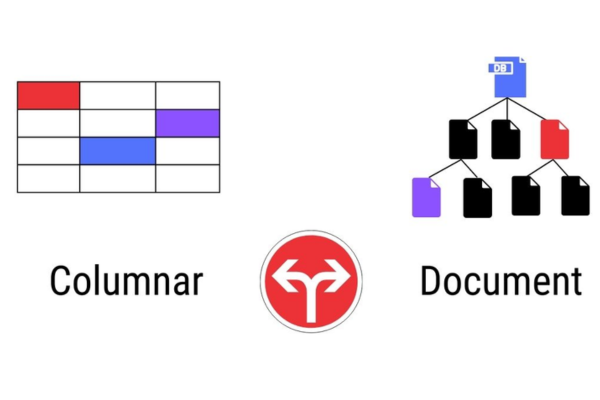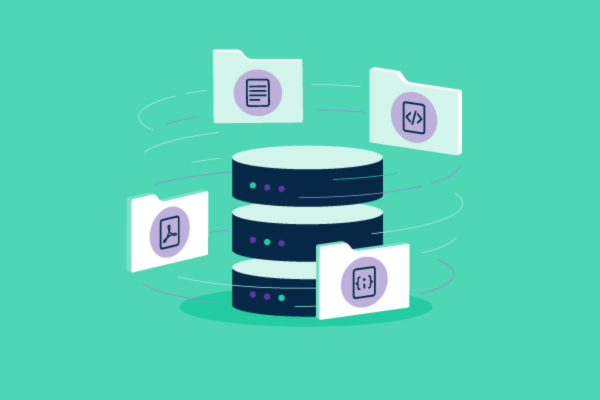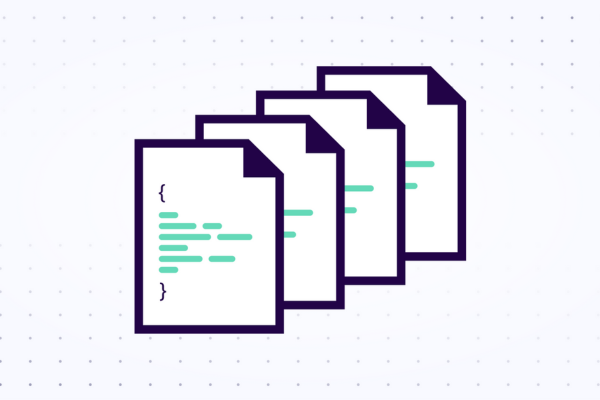The Relationships Between Document Databases & Other Databases
5 Mins Read
Published on: 24 February 2025
Last Updated on: 28 February 2025

toc impalement
Businesses need to invest in data management to succeed. Data has become so important to enterprises in every industry that it is called the ‘new oil’ of the modern world. The following article will explore the difference between document databases vs other databases and help you understand everything.
From component databases that ensure compliance for new businesses to gathering customer data to improve services, businesses need to know how to use this data.
The volume of data available to businesses increases each year, and companies that don’t apply business intelligence to data analytics. Whether through predictive analytics, prescriptive analytics, or real-time analytics, won’t be agile enough to compete in this data-driven world.
Businesses can implement many types of databases to store and sort their data, with SQL and NoSQL being the most widely used. The difference between the two types of databases is their schema.
An SQL database has a fixed schema, where the data adheres to a set of defined attributes and formats and can easily be organized into tables and columns.
A NoSQL database has a flexible schema, allowing it to alter its data structure without modifications. Of the different types of NoSQL databases, document databases are widely used due to the way they store information and their relationship with other NoSQL databases.
What is a Document Database?

As the name suggests, a document database stores information in documents, and each document holds information about one object and its related metadata. The data in a document storage is as field-value pairs, and the values can be of various types, such as numbers, strings, arrays, dates, or objects.
Documents can also be present in formats like JSON, BSON, and XML, making them very flexible and adaptable for developers. When grouped together, the documents become a collection, which is usually made up of documents with similar contents.
However, a collection need not have all documents with the same fields. This is mainly because document databases usually possess flexible schemas.
For example, if the information of two people is present in the same collection. They don’t have to have the exact fields of information for each individual.
The advantage of this is that it avoids the obstacles of translating information about an object into a fixed schema and the need to define a schema for a table. This makes document databases one of the most adaptable NoSQL databases.
Document Databases vs Other Databases – Relationship to Other Databases
Another reason a document database is so adaptable is its relationships with other NoSQL databases.
A key advantage of document databases is that the document model is a superset of other data models. Including key-value pairs, relational data, objects, graphs, and geospatial models. Below, we will look at each relationship:
Key-Value Pairs
A key-value database stores data as pairs of keys and values, and each key is unique and associated with a value that can be a simple data type or a binary object.
The relationship with key-value databases allows the key-value pairs to undergo modeling with fields and values in a document.
This means that all fields in a document can undergo indexing, thus, it provides developers with additional flexibility in data query.
Relational Data
Relational data is information within tables, with rows usually representing records and columns usually representing attributes. A document database can model this data differently by keeping related data together in a single document using embedded documents and arrays.
The related data can also be collected and stored in separate documents, and database references can be used to connect the related data.
Objects
One reason why document databases are so flexible is their ability to map objects in several popular programming languages.
This is because the data storage in the document format closely resembles JSON objects, which are the native data structures in many languages. This allows developers to use the data without any data mapping or transformation.
Graph
Graph databases use nodes and edges to show relationships between different points of data.
Edges and graph nodes easily model as documents and the edges can model through database references.
Geospatial
Geospatial data is a large set of spatial data, usually covering objects, events, or features on Earth. And the collection is from sources in varying formats. These data points can include census data, real estate listings, weather data, cell phone data, and even social media data.
Geospatial data representation is through arrays in documents, allowing developers to collate large volumes of data in single collections.
Document Databases vs Other Databases – Key Differences

Now that you know the relationship between the two databases, it is important to know the differences. Let’s have a look at the differences between the two databases:
Data Model
Document databases store data in semi-structured and flexible documents. This allows easily evolving data structure that aligns with rapid development.
Document databases store data in JSON-like documents with nested key-value pairs. On the other hand, other databases such as relational ones use tables with rows and columns.
Each column in such tables has a defined data type.
Schema
Document databases have flexible schema within a collection which can have different fields. However, relational databases require a predefined, strict schema for all data.
Querying
Document databases typically use document-oriented query languages which search depending on field values within documents.
On the other hand, relational databases use SQL to query data depending on the relationship between tables.
Scalability
The distributed nature of document databases, they can often scale horizontally by adding more nodes.
This makes it suitable for large datasets and high traffic scenarios. On the other hand, other databases do not perform the same.
Usage
Popular document databases such as MongoDB, CouchDB or Firebase Firestore all find their use cases in storing complex website content and sensor data.
Other databases are suitable for data with high structure and well-defined relationships.
Wrapping It Up!
That was all about the different comparison points between Document Databases vs Other Databases – from differences to relationships. The differences listed here are the top ways you can understand the two databases completely.
This can help you understand their usage and complete concepts behind them so that you can use them effectively. In addition, with the help of this comparative analysis, one can understand the changes occurring in this sector.


















Comments Are Closed For This Article